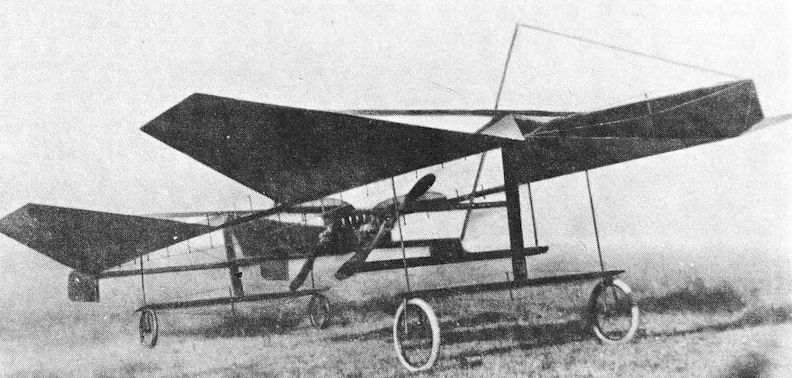
Описание
Страна: Канада
Год: 1910
K.Molson, H.Taylor Canadian Aircraft since 1909 (Putnam)
Gibson Twinplane
William Wallace Gibson designed and built aircraft in the pioneer days of aviation but what made him unique among the early Canadian experimenters was that he designed his own powerplant as well as the airframe.
Gibson was born on 28 March, 1876, in Ayrshire, Scotland, and emigrated to Canada in 1882 with his parents who settled in Saskatchewan near Regina, and as a young man ran a general store. Gibson experimented with kites and later with spring-powered aircraft models. He then designed a petrol engine as the first step towards making a full-size flying machine. At the same time he accepted a contract to complete 48 miles of railway line, including the section between Wolseley and Regina, but went bankrupt trying to finish the job.
He then moved to Victoria and joined a prospector in working a gold mining claim which they developed and sold for $10,000. This enabled Gibson to complete his unfinished engine. It was a four-cylinder four-stroke air-cooled upright engine but when completed and tested suffered from vibration.
Working with Gibson was a partner who Gibson only identifies as David and who promised to put up $5,000 for the experiment but was only able to produce $500. A new engine was designed and built. This one was a six-cylinder two-stroke air-cooled upright unit of 4 1/2 in (114-3 mm) bore and 4 1/4 in (107-95 mm) stroke which was stated to have produced 40 hp. The engine was made in Victoria except for the crankshaft which was made in New York and the aluminium crankcase which was cast in Seattle. The completed engine weighed 210 lb (95 kg). There is no mention of problems with the engine and it apparently ran satisfactorily from the beginning.
Gibson then designed an airframe which he called the Twinplane. It was a tandem-wing monoplane of low aspect ratio with a forward elevator for longitudinal control. A pair of rudders was mounted below the rear wing. The pilot was seated below the front wing and behind him was the engine driving a tractor propeller at the front and a contra-rotating propeller at the rear which ran at twice engine speed. A four-wheel undercarriage was fitted. A shoulder-yoke control operated the rudders, but no form of lateral control was provided. No doubt Gibson’s model experience led him to trust the generous dihedral angle of the wings for lateral stability.
Gibson recorded in verse two preliminary trials -
'Twice we had led our bird to flight
To find the members were too light’.
The press only recorded one trial on 8 September, 1910, at Mount Tolmie, just outside Victoria. It was found that the undercarriage and wheels were too weak, the engine was too far forward, and some tail bracing needed strengthening.
The alterations made. Gibson next tried the Twinplane in the early morning of 24 September. The aircraft quickly rose but a slight crosswind drifted it to the right and Gibson aggravated the problem by operating the shoulder harness the wrong way. The machine crashed into some oak trees and Gibson was thrown clear; the engine, which was also thrown forward, fortunately missed Gibson. The machine was damaged beyond repair.
One 40hp Gibson engine. Span 20ft (6-09m). No other information available.
- K.Molson, H.Taylor Canadian Aircraft since 1909 (Putnam)
Фотографии
-
K.Molson, H.Taylor - Canadian Aircraft since 1909 /Putnam/
Gibson Twinplane.

